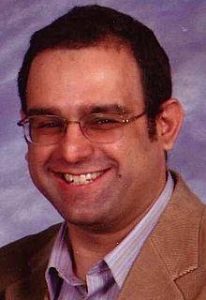Citizen Science
Announcing Downwinders 3.0
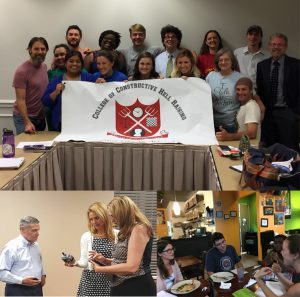
Downwinders is Regrouping, Renewing, and Regenerating. Almost half our new board is under 30. We have a new scientist. We have a new focus. Now we need you.
Many of you are aware of the time and effort Downwinders at Risk put into the unprecedented UNT Ozone Study which brought DFW elected officials and local atmospheric researchers together for the first time to operate the same computer model for air quality used exclusively by the State and EPA.
The results of that study provided a practical map for compliance with the current federal ozone standard: new controls on coal plants, cement kilns and gas facilities. It was shared by local officials with the EPA in hopes of that agency drafting a new DFW air plan that might finally address these major sources of local air pollution.
Those hopes were dashed by the presidential election last fall.
Because of a perfect storm of regulatory changes and politics, we now believe that the EPA won’t intervene on behalf of DFW air quality for the foreseeable future. It appears DFW will not even have to submit another serious plan to address smog for at least a decade – if then.
Over the last 20 years no other group has leveraged as much change from DFW federal clean air plans as Downwinders at Risk. We won the first comprehensive study of cement plant air pollution control technology by the state. We got new smog-control technology installed on the Midlothian cement plants. We used the “Green Cement” provision of another federal smog plan to stop the burning of hazardous waste in those cement plants and close the oldest, dirtest kilns in North Texas. In the most recent plan, we exposed the large impact of oil and gas pollution on local DFW smog levels.
But while we’ll continue to stay in the EPA’s ozone/smog regulatory loop through legal representation, we don’t see any opportunity to impact public policy using federal clean air plans the way we have in the past.
With this change, we had to rethink how we work toward better regional air quality in North Texas. How do we impact the most lives, in the biggest ways, with the resources we have?
We’ve come up with three strategies, all of them taking advantage of our long history of increasing the ability of local residents and governments to take on dirty air themselves.
____________________________________________
OUR NEW PRIORITIES
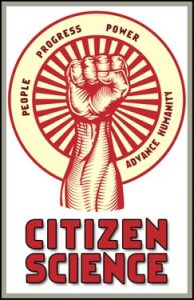
Build a modern, independent, and citizen-friendly regional air pollution monitoring network for DFW
You can’t fix problems unless you know about them, and this is a way to begin building a regional alternative to state monopoly of air quality expertise and resources.
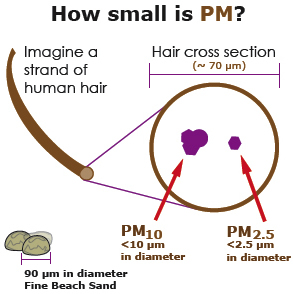
Identify, reduce, and eliminate health threats posed by widespread Particulate Matter (PM)pollution in DFW
PM is the new smog and local campaigns to reduce it can help a lot of people, especially those predominantly minority neighborhoods who’ve been dumped on the most.
Organize a grassroots campaign to restore local government zoning control of industrial hazards
A state government bought by polluters has gone too far in restricting the liberties of Texans and demolishing democracy at the local level. We’re fighting back.
____________________________________________
We co-founded the DFW Air Research Consortium last year with researchers from area universities and local governments with the idea of building a modern and locally-controlled air quality monitoring grid across DFW that can track pollution plumes in real time. This can become a powerful grassroots enforcement and education tool.
Downwinders itself bought two EPA-certified ozone monitors we’ll be using to specifically track smog levels in Wise County, where the State refuses to put a monitor despite evidence that’s where the region’s highest ozone readings are located.
This is more than just increasing the number of monitors – this is an opportunity to change the way people see air pollution affecting their lives. It’s also another opportunity to take what was the exclusive regulatory providence of an apathetic state government and give it to more concerned local governments.
We’re also beginning a new campaign focusing on microscopic pieces of soot known as Particulate Matter, or PM pollution. In recent years, PM pollution has been linked in the scientific literature to a wide variety of non-respiratory and cardiovascular diseases including ADHD, autism, Parkinson’s, dementia, and infertility. Like lead, many researchers believe there is no safe level of exposure to this kind of pollution.
Sources of PM pollution include any internal combustion engine, furnace, boiler and windswept piles of sand, or cement dust. Studies have found a correlation between proximity to a major source of PM pollution and increased risks of illness.
This is why other communities around the country are cracking down on idling trucks and buses and establishing buffer zones between major freeways and residences, parks and schools. We want to reduce the pollution as well as the exposure to it.
Finally, because there’s no hope of addressing air pollution from the oil and gas industry without any change in HB 40, the 2015 state law that took away local control of industrial zoning, we’ve begun a project aimed at building an alliance that challenges state overreach and promotes the restoration of traditional local control. Cities must have the right to protect their residents’ public safety and health. This campaign will challenge the status quo in both Austin and North Texas.
As always, they’ll also be campaigns we could not anticipate but have to wage. One example is the recent proposal by Dow Chemical to bag municipal trash for burning in the nation’s cement kilns. Dow has already targeted the local cement kilns in North Texas for this scheme, but Downwinders is pushing back hard and working with nationwide alliances to halt this project before it gets very far.
NOW WE NEED YOU

This coming THURSDAY is another North Texas Giving Day, a chance for your donations to be magnified by challenge grants and other incentives over the day. Because we’ve added responsibilities and staff, Downwinders at Risk needs this one to be our best, most productive Giving Day yet.
All transactions take place online that day. It’s simple to give and you can link to the Giving Day pay portal through our Downwinders’ website or FaceBook page beginning at 6 am on the 14th, and going all the way to midnight:
https://northtexasgivingday.org/npo/downwinders-at-risk-education-fund
DFW has been in continuous violation of the Clean Air Act for 26 years. We’re asking you to take a minute and contribute $26 to clean air work in the place where your lungs do most of their breathing.
We know hurricane season is testing the limits of our charitable giving, but $26 is all we’re asking. At a time when the state and federal government are intent on not protecting our air, Downwinders continues to be stubborn advocates for progress.
We deeply regret not being able to win a clean air plan for DFW in 2017 that might finally leave us in compliance with the Clean Air Act. But our long term goals remain the same. We hope you agree our work is worth your continued support. Thank you for your consideration.
Cowtown Redux for “21st Century Air Monitoring” Sept 7th
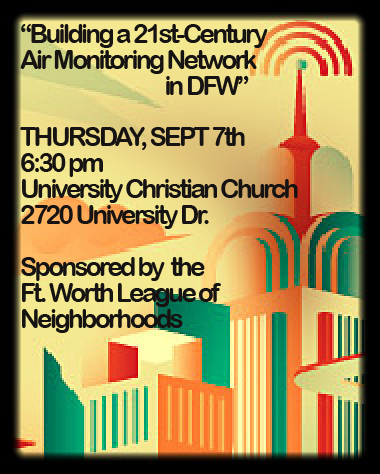 If you missed our “Science and Socializing” series of roll-out events for the DFW Air Research Consortium in June, you have a chance to catch the show again on Thursday September 7th when the Fort Worth League of Neighborhoods is using its September monthly meeting to host a repeat performance.
If you missed our “Science and Socializing” series of roll-out events for the DFW Air Research Consortium in June, you have a chance to catch the show again on Thursday September 7th when the Fort Worth League of Neighborhoods is using its September monthly meeting to host a repeat performance.
Dr. David Sterling and Graduate Assistant Leslie Allsop of UNT Health Science Center, as well as Downwinders at Risk Director Jim Schermbeck are the featured speakers.
In just a little over a year, the Air Research Consortium has grown in both size and ambition since being co-founded by Downwinders and local university professors to push the goal of a dense grid of sensors for DFW providing more detailed real time information on air quality than the status quo. At last count, the cities of Dallas, Fort Worth, and Plano had joined, along with UTD, TCU, UNT, UNTHSC, UTA, Liveable Arlington, and Mansfield Gas Awareness.
Although the group’s proposal to the National Science Foundation for funding a grid pilot project next year didn’t get selected over the summer, it did make it to the final round and give the members confidence in the idea. New sources of support for the grid are being explored, and more cities are adopting this more comprehensive approach to monitoring.
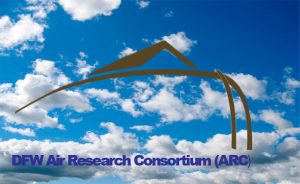
Meanwhile, two other Consortium projects are moving forward.
One is matching ten Particulate Matter and Ozone sensors with as many local public schools in Fort Worth, Dallas. Richardson and Plano. The other is Downwinders’ own Wise County Ozone Project, which commits two ozone monitors to a place no state ozone monitor has ever been.
Building the Consortium’s air monitoring grid has become a major goal of Downwinders because of its potential to give citizens a powerful new tool. Our on-going job is to figure out how best to integrate this new sensor technology into our traditional community organizing model to get change faster on the ground. We truly believe this new kind of air monitoring can change the way people “see” air pollution and how it impacts their lives.
But don’t take our word for it. Come see the presentation on the 7th and decide for yourself.
Meet Our New Scientist
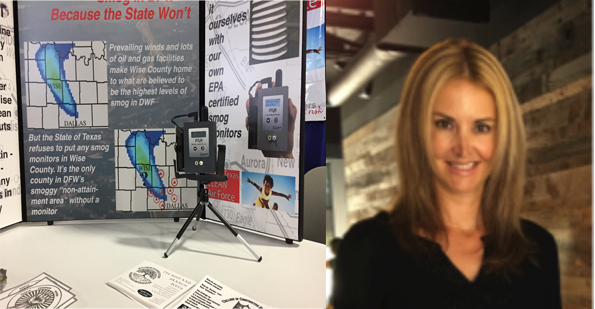 Downwinders’ Wise County Ozone Project Gets A Director
Downwinders’ Wise County Ozone Project Gets A Director
Downwinders at Risk is proud to announce Kari Northeim, a doctoral student in Environmental Sciences at the University of North Texas, has agreed to become our Wise County Ozone Project Director.
Kari brings an impressive resume and a rigorous level of scientific methodology to the use of our two new EPA-calibrated portable ozone monitors we purchased earlier this year.
She has an undergraduate degree in Engineering from Iowa State, has two more years at San Francisco State studying Meteorology, including climate change modeling and global warming research. Still not satisfied, she went and got a Business degree at Syracuse, worked in the private sector for 16 years, went back to teach High School science, and is now pursuing a PhD. in Environmental Science – Biological Sciences with an emphasis on Health Geographical Information Systems. Did we mention Kari has an impressive resume?
But it’s more than accumulated degrees. Kari’s father and all of her siblings are engineers, while her mom is a math teacher. Number crunching is in her blood. And she wants to use those mad skills to help the environment and people. So instead of making small fortunes for Wall Street firms or multinationals, she’s helping non-profits do original research in smog pollution.
How did we find her? She found us. Following her UNT adviser’s advice to catch the presentations on 21st Century air quality monitoring featured in Downwinders’ series of Evenings of Science and Socializing last June, she drove down to Fort Worth, saw the show, and stayed to talk. It’s a great outreach event when it snags this kind of talent (and courtesy of the Ft. Worth League of Neighborhoods, you have a chance to see a repeat of that Cowtown performance September 7th – see the notice below).
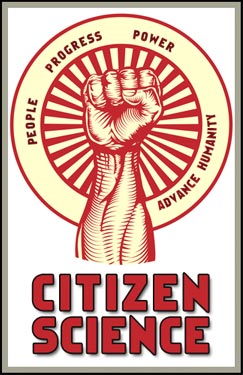 Believed to be the largest, or at least most ambitious citizen-science project in North Texas, Downwinders’ Wise County Ozone Project is going where no state or federal monitoring for smog has gone before: into the only DFW “non-attainment” county without an ozone monitor.
Believed to be the largest, or at least most ambitious citizen-science project in North Texas, Downwinders’ Wise County Ozone Project is going where no state or federal monitoring for smog has gone before: into the only DFW “non-attainment” county without an ozone monitor.
Wise County is where fracking was born and the gas industry still dominates many parts of it. It’s also where a lot of everyone else’s smog accumulates. Predominant southeast winds push it from the Gulf Coast all the way to Midlothian, through the metro DFW area, and into Wise County.
Based on past computer modeling by the State itself, ozone levels are often predicted to be higher in Wise County than any other 10 DFW non-attainment counties – but there’s still no State monitors there.
That gap in local public health information is intentional and it’s that gap the Wise County Ozone Project is filling.
Northeim is already drafting plans on how best to put the monitors to the test in the field. She wants us to have the ability to use them as stationary monitoring sites, as well as be able to take them with us on the road. It’s a complex and long-term mission that Northheim says she relishes. And she’ll be putting out the “Help Wanted” sign soon as she recruits other citizen scientists and volunteers to help, so stay tuned. You too can become a citizen scientist for the public interest.
Finding Kari was a real coup. But from its founding, Downwinders has had a long and distinguished history of working with great scientists and using sound science to advance the cause of cleaner air.
Dr. Marvin Legator’s 1996 report on the State’s toxicity classification system eventually led to some changes in Austin. Dr. Stuart Batterman did a landmark public health critique of the TXI hazardous waste burning permit in the late 1990’s. Dr. Al Armendarez, an engineering professor at SMU when he started out as Downwinder’s technical adviser, left in 2009 to become the first engineer ever to be appointed as Regional Administrator for EPA. In 2015, Dr. Kuruvilla John of UNT’s Physics Department used that school’s supercomputers to reproduce the state’s air modeling for DFW outside of Austin for the first time so elected officials could see what impact new pollution controls would have.
Soon-to-be Dr. Kari Northeim is the latest effort by Downwinders to develop local DFW expertise to help solve DFW air pollution problems. Please join us in welcoming her to the cause and consider signing-on to what is sure to be another historic challenge to the Status Quo.
Is that a Disco Ball, or is Your Photoluminescence Experiment Just Glad to See Me?
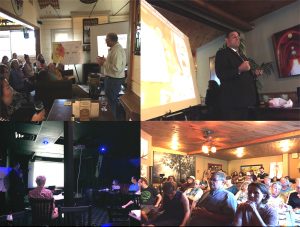
Downwinders’s “Evenings of Science and Socializing”
Concludes with SRO Crowd in Denton
We’re pretty sure it was the first time Cambridge-trained UTD Physicist Dr. David Lary had presented in a bar.
The occasion was opening night of Downwinders’ “Evenings of Science and Socializing” at Bryan Street Tavern, in a dark back room that came complete with fog machine, disco ball, and a too-close juke box.
But Dr. Lary is nothing if not persistent. He’s applied for one grant after another in trying to fund his dream of a regional grid of hundreds or thousands of air monitoring sensors. He was told not to even bother applying for a prestigious National Science Foundation grant. That would be the same grant he and his consortium of colleges, cities, and citizens groups are now in the running for. That kind of persistence is why he’s an honorary Downwinder.
And so, like the trooper he is, Dr. Lary pushed through all the distractions and pitched his plan to an audience of about a dozen and half, including wayward bar patrons who stumbled onto the exhibit and stuffed $5 dollar bills into the donation jar.
Four nights later it was Dr. David Sterling of the UNT Health Science Center explaining how his school’s partnering with the Fort Worth League of Neighborhoods gave birth to the design of the portal used by the public to access the monitoring information. His talk drew about two dozen citizens to the Ginger Man pub, including many that had been directly involved in the focus groups he had sponsored over the past five years.
And two nights after that, Dr. Lary and UNTHSC Environmental Health doctoral candidate Leslie Allsop showed up at the Greenhouse in Denton with a Standing Room Only crowd of at least 40-50 folks, plus a few latecomers who were turned away.
Some of the audience questions were the same at every meeting. How much do the sensors cost? How do we get one or more of them? Some were particular to the location or audience being addressed, like why is Denton always the “worst-performing monitor” in North Texas? Answer: location, location, location.
All of these meetings were the first time the general public had been invited to look at the technology and plans of the DFW Air Research Consortium, (DFW ARC) the less-than-year old group that’s gaining momentum in its quest to use high tech solutions to decades-old problems. Downwinders has been instrumental in establishing and administering the group. It includes the cities of Dallas, Fort Worth, Plano, the School Districts of those cities plus Richardson and the Dallas County Community College system, TCU, UTA, UNT and UTD, plus Livable Arlington and Mansfield Gas Well Awareness.
 News of the National Science Foundation grant the Consortium applied for should be coming any day now. Considering the competition, it would be quite incredible if the Consortium won. It would generate much needed publicity and increase our chances for getting other grants. But regardless, the work that went into the NSF grant has produced a template for the Consortium to apply to other foundations and individuals to grow the same regional grid of sensors. The work won’t stop if the NSF money doesn’t come through.
News of the National Science Foundation grant the Consortium applied for should be coming any day now. Considering the competition, it would be quite incredible if the Consortium won. It would generate much needed publicity and increase our chances for getting other grants. But regardless, the work that went into the NSF grant has produced a template for the Consortium to apply to other foundations and individuals to grow the same regional grid of sensors. The work won’t stop if the NSF money doesn’t come through.
Proof of that are two on-going projects of the Consortium and its members that are already up and running.
The “10-Schools” project at UTD is one where a select number of schools across the Metromess will be paired with Particulate Matter and Ozone monitors in the first attempt to sketch out the frame of a regional grid system. Selection of the schools is being weighed right now. At every meeting there was a suggestion from citizens for this or that school that should be included based on its proximity to a large pollution source, or high absentee rates. It will be tough to narrow all those suggestions down to ten.

In the Fall, the project will be distributing the monitors, being assembled now at Dr. Lary’s lab at UTD. They’ll come with a video camera, a micro meteorology unit, and the pollution sensors themselves. Students will be able to use the monitors as a tool in classes. Neighborhoods will be able to use the information to better protect themselves. It will be the beginning of building a regional grid that identifies and tracks air pollution much better than the state or EPA does now.
Then there’s Downwinder’s own “Wise County Ozone Project,” that will use the two brand new portable ozone monitors we just bought to begin recording smog levels in the one and only county in the “DFW Non-Attainment Area” that doesn’t have any. We have at least one location secured for a stationary monitor, but we need some additional assistance. To pull this off, we need:
– Carpenters that can help us assemble a couple of 12-13 foot wooden platforms that will house the monitors.
– Solar expertise and panels to help power the monitors.
– Electrical Engineers that can help us hard wire the monitors to those panels and back-up batteries.
– IT experts who can help us with connectivity issues.
If you or someone you know could be of help in any of these categories, please write us at Info@downwindersatrisk@gmail.com or call us at 469-608-1972.

What these two projects prove is the technology featured in all three of our recent events is here now and being used. We don’t have to wait. We just have to organize ourselves to make effective use of it. Help us do that. With your expertise if you have it. With your time if you can spare any. With a contribution if you can.
There are many things you may feel powerless to change right now but this is a “bricks and mortar” change on the ground that can take place over the next few years and promises to deliver a challenge to both Austin and DC. Become a part of it.
Thanks to Dr. Lary, Dr. Sterling and Ms. Allsop for donating their time and taking on the challenge of bringing science to the public..and pubs. Thanks to our co-sponsors: The Dallas Innovation Alliance, the Fort Worth League of Neighborhoods, and the Denton Drilling Awareness Group. And thanks to everyone who showed up and made these events more useful to citizens. Onward thru the Smog.
How Fort Worth Neighborhoods Helped Birth a High-Tech Regional Air Monitoring Network
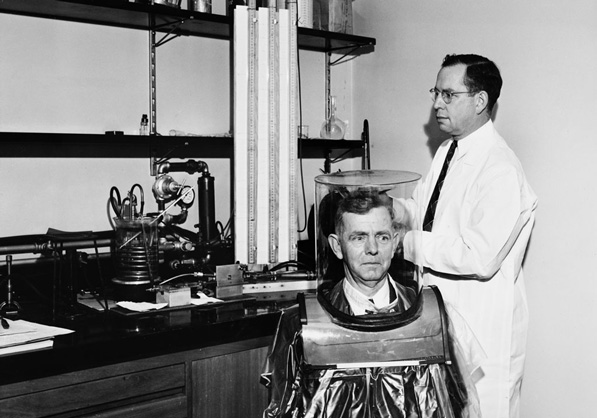
“An Evening of Science and Socializing”
Monday, June 22nd
7- 9 pm
The Ginger Man
3715 Camp Bowie
Featured Guest: Dr. David Sterling, Professor of Biostatistics and Epidemiology,
University of North Texas Health Science Center
Co-Sponsored by the Fort Worth League of Neighborhoods
They approached the leadership of the Fort Worth League of Neighborhoods, an umbrella organization of 350 neighborhood associations, about establishing a series of focus groups on the issue. The League agreed.
Those focus groups have provided us with the most thorough knowledge about community attitudes toward air quality in DFW that we’ve ever had, and directly influenced the bottom-up design of a new high-tech sensor network for air quality.
Leading those focus groups were UNTHSC Professor Dr. David Sterling and Doctoral candidate Leslie Allsop. Dr. Sterling is our featured guest tonight in Fort Worth at The Ginger Man for our second “Evening of Science and Socializing.” Ms. Allsop will be at our third and last event in Denton with Dr. David Lary on Wednesday night.
Residents in Sterling and Alsopp’s neighborhood focus groups voiced a high level of concern regarding air pollution and what they saw as the sources of it, including vehicles, fracking, and cement plants.
Participants also expressed a severe distrust of current information. They didn’t see the information available through government and media sources as being relevant to their neighborhood, or adequate to address their questions about specific emission sources.

Specifically:
• Participant’s perceptions of air quality was overwhelmingly negative, and available information was seen as being biased or unreliable.
• Within the socio-ecologic model, the primary impacts of air quality were perceived as greatest at the individual/neighborhood level.
• The ability to influence air quality at the individual/neighborhood level were perceived as negligible.
• Influencers were seen as residing at the policy and community level, but limited benefit at individual/neighborhood levels were perceived to occur.
Recognize any of these reactions? Concerned, but feeling powerless to affect the status quo.
How do you overcome this attitude? You build your own air quality monitoring network. One that’s independent of the government. One that citizens help design. One that allows you to feed information into it, as well as get much better information from it.
That’s the alternative system the DFW Air Research Consortium, including the UNTHSC researchers, is constructing from scratch.
Besides the disbursement of small e-sensors over the entire region that combine to give you a “weather map” of air pollution in real-time, one of the most distinct features of the Consortium’s new system is a digital dashboard that can collect the information a resident inputs into it.
Say you’re having a bad air day. Your eyes are watering. You have breathing problems. You check those boxes on the dashboard. The next time those conditions are forming, the dashboard will warn you. That’s the micro level.
But it will also take note of everyone else’s symptoms that were entered as well. If lots of people were also having a bad air day, it will tell you. And if people are experiencing health effects at certain levels, you’ll be able to see that in a very direct correlation. In this way citizens themselves are their own epidemiologists, with the possibility of establishing symptoms at levels of exposure to pollutants not yet linked in the literature. That’s the meta level.
All of this interactivity between user and app is traceable back to the UNTHSC’s focus groups starting four year ago. Fort Worth residents are responsible for helping to design the software to be paired with the Consortium’s sensor hardware.
Tonight in Fort Worth, UNTHSC’s Dr. Sterling gives an update about where his research has taken him and Ms. Allsop, including being in the running for a $3 million National Science Foundation grant with the rest of the Air Research Consortium. The competition includes the Argonne National Laboratory.
Libby Willis, President of the League of Neighborhoods when the research started will be there as well representing the residents who are responsible for so much of the direction of the current Project.
Besides the larger NSF grant awaiting a decision, two active citizen sensor projects already going on will also be discussed: Downwinders’ own Wise County Ozone Project and a grant that will allow the pairing of 10 sensors with ten DFW schools.
You don’t have to wait until 2018 to resist the anti-environmental agenda so in vogue in Austin and Washington. You can help build an alternative now.
Two New Articles on our Citizen Science Projects
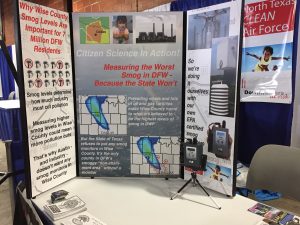 Our local “environmental paper of record” DFW GreenSource has a piece up about the DFW Air Research Consortium’s plan for a local 21st Century air monitoring network that quotes UNT Health Science Center researcher Leslie Allsopp and Downwinders’ Chair Tamera Bounds.
Our local “environmental paper of record” DFW GreenSource has a piece up about the DFW Air Research Consortium’s plan for a local 21st Century air monitoring network that quotes UNT Health Science Center researcher Leslie Allsopp and Downwinders’ Chair Tamera Bounds.
Meanwhile the Texas Observer just put up an article about Downwinders’ Wise County Ozone Project.
Both of these citizen science efforts, plus others, will be covered in each of the three “Evenings of Science and Socializing” we have coming up over the next week, beginning at 7 pm tomorrow night at the Bryan Street Tavern in Old East Dallas. The Dallas Innovation Alliance is the Co-Sponsor, and they have their own sensor pilot project in the West end to brag about. Y’all come.
Get Me To the Geeks
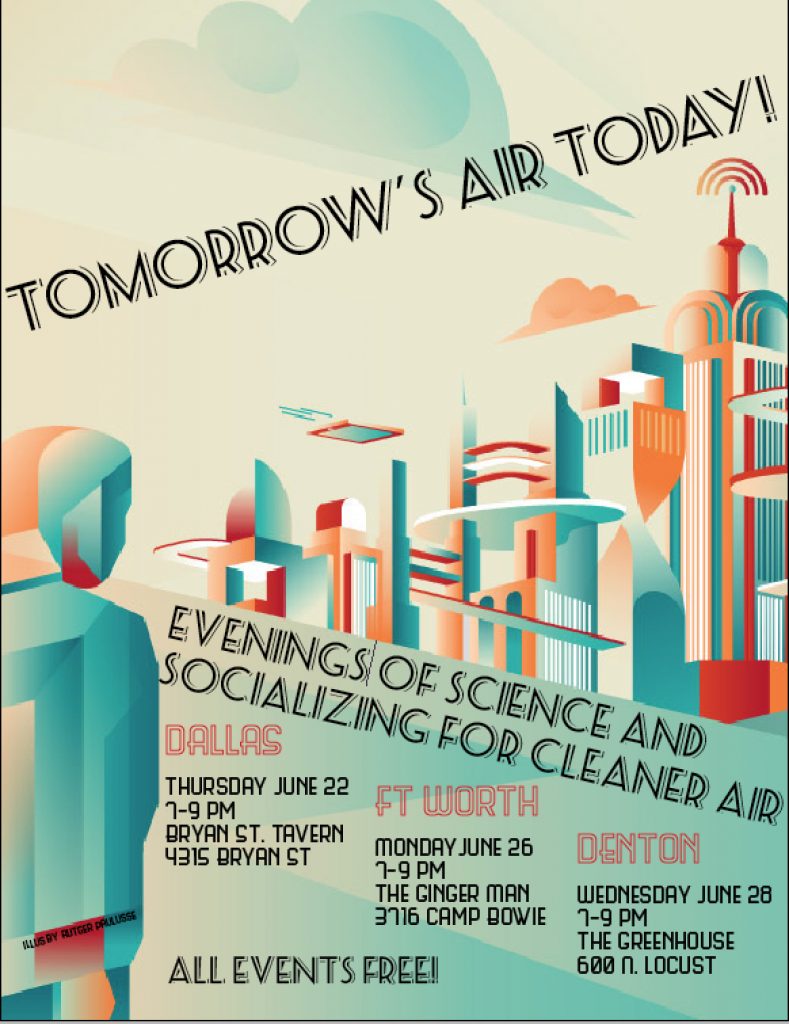
Come See How Radical The Future Really Is
3 Evenings of Exploring One of the Most Exciting Collaborations between Scientists and Citizens in the Nation while their grant is under consideration at the National Science Foundation
A consortium of N orth Texas universities, municipalities, and citizen groups, including Downwinders at Risk, is laying the foundation for a revolutionary grassroots high-tech approach to air quality monitoring that will render the current top-down system obsolete.
orth Texas universities, municipalities, and citizen groups, including Downwinders at Risk, is laying the foundation for a revolutionary grassroots high-tech approach to air quality monitoring that will render the current top-down system obsolete.
This new consortium proposes to build a dense grid of small, inexpensive air sensors that anyone can access for real-time air quality information. It’s currently in the running for a $3 million National Science Foundation grant for two local pilot projects that will do just that. It also has two other projects involving the distribution of e-sensors in DFW already in-progress. One of these is our very own Wise County Ozone Project.
It’s hard to overestimate how much of a game-changer this bottom-up approach to monitoring air pollution can become once citizens exploit its tools. Residents will be their own clean air watchdogs, asthma patients will have a huge heads-up, industrial plumes can be tracked in real time across the Metromess. Many of the ways this new effort will be most useful haven’t even been invented yet.
That’s why we’re bringing the good news of this new consortium to you in three public events.
Not only are we laying out the concept as it was presented to the National Science Foundation, but we’ll have some of the consortium’s leading researchers at each event to field your questions, and displays of some of the new generation of e-sensor air monitors being used.
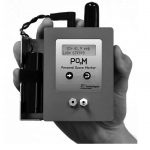 Whether you’re a asthma suffer, clean air activist, science geek, or researcher, you’ll be amazed and intrigued by the policy and public health implications of the consortium’s vision.
Whether you’re a asthma suffer, clean air activist, science geek, or researcher, you’ll be amazed and intrigued by the policy and public health implications of the consortium’s vision.
This is an opportunity to be inspired.
An unprecedented alliance is coming together in your own backyard.
Plug-in and make change happen.
Dallas
Thursday, June 22
7-9 pm
 Bryan Street Tavern
Bryan Street Tavern
4315 Bryan Street
SPECIAL GUEST:
Dr. David Lary University of Texas at Dallas
Dr. Lary is the DFW Air Research Consortium’s leading expert on environmental sensors. He’s the founding Director for Multi-Scale Intelligent Integrated Interactive Sensing Center for Space Science at UTD. He has extensive experience with both stationary sensors and use on mobile platforms, including drones.
Fort Worth 
Monday June 26th
7-9 PM
The Ginger Man
3716 Camp Bowie Blvd
SPECIAL GUEST:
Dr. David Sterling
University of North Texas
Health Science Center
Dr. Sterling has more than 30 years experience as a public health investigator. Much of his research has focused on environmental exposures in low-income communities. Dr. Sterling’s current research centers on asthma management in a school environment, and assessing how communities perceive and react to air quality issues. He’s worked extensively with the Ft. Worth League of Neighborhoods in identifying resident concerns and needs in reading and using air quality data.
Co-Sponsored by the Forth Worth League of Neighborhoods

Denton
Wednesday, June 28th
The Greenhouse
600 North Locust
Double Feature for the Host City of the
Worst Smog Monitor in the Region
Leslie Allsop MSN, MPH UNT Health Science Center
Ms. Allsop is a doctoral student at UNT’s Health Science Center and has worked for years with skeptical North Texas citizens groups to build community acceptance and effectively use the data provided by a new system of sensor air monitoring.
Dr. David Lary
University of Texas @ Dallas
Transformational National Science Foundation Grant for 21st-Century Air Monitoring Gets a Call Back
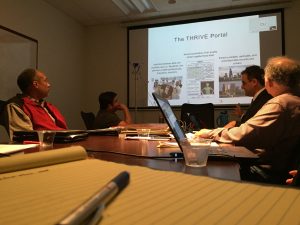 In a milestone for the local consortium Downwinders At Risk is working with to bring DFW air quality monitoring into the high-tech era, its $3 million request to the National Science Foundation for funding two pilot projects got a call-back last week.
In a milestone for the local consortium Downwinders At Risk is working with to bring DFW air quality monitoring into the high-tech era, its $3 million request to the National Science Foundation for funding two pilot projects got a call-back last week.
Led by University of Texas at Dallas high tech guru Dr. David Lary, the group includes scientists and researchers from the University of North Texas and UNT’s Health Science Center, Texas Christian University, the cities of Dallas, Fort Worth Plano and Richardson, the Fort Worth Independent School System, the Dallas County Community College District, the Fort Worth League of Neighborhoods, Livable Arlington, Mansfield Gas Well Awareness, and Downwinders at Risk.
There were said to be over 200 applicants applying for the NSF’s “Smart and Connected Cities” grant when the deadline passed about a month and a half ago. The NSF isn’t revealing how many of them got a follow-up “Virtual Site Tour” of the proposal, but the number isn’t believed to be very large. Rumor has it that one of the main competitors to the DFW proposal is Argonne National Laboratories, a 70-year old gigantic research industrial complex born out the Manhattan Project.
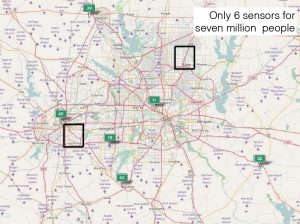 That a group that wasn’t even in business a year ago is now in the running with such a Colossus in a very competitive nationwide talent contest for valuable and scarce research dollars is pretty remarkable on its own. What makes it even more remarkable is that staff at the NSF itself actively discouraged the DFW project from even applying, because they didn’t think the proposal could compete with the scientific heavies already in the race.
That a group that wasn’t even in business a year ago is now in the running with such a Colossus in a very competitive nationwide talent contest for valuable and scarce research dollars is pretty remarkable on its own. What makes it even more remarkable is that staff at the NSF itself actively discouraged the DFW project from even applying, because they didn’t think the proposal could compete with the scientific heavies already in the race.
But what the NSF staff underestimated was how much the DFW project challenges and changes the status quo from the bottom up. It’s hard to imagine a proposal that has the potential to deliver more benefits to more people. 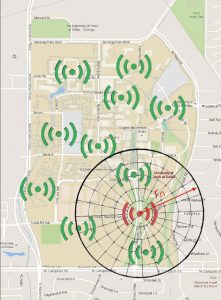
At the heart of the vision for the DFW grant proposal is the idea of an independent network of hundreds, then thousand of small e-sensors placed in a thought-out grid across the entire urban core of the Metromess. These sensors would be located every kilometer or even half-kilometer, block by block, down major thoroughfares, by schools and parks and daycare centers, by facilities that pollute.
So instead of relying on a handful of clunky large official EPA/TCEQ monitors scattered over an area the size of a couple of New England states, you know have data from just outside your own door.
Moreover these sensors would be able to deliver information about air quality in real time to an app on your phone or computer. Contrast this with the two-and-a-half hour wait between sampling and result you see on the official monitor websites now.
But wait, there’s more. As part of the app, you’re made aware of local conditions via an avatar or virtual human, who you can design yourself from a number of attributes. It will present you a list of health symptoms the poor air quality might trigger. But this avatar is also interactive through the network “portal.” You can upload your own symptoms when you’re having a bad air day. The software will look for correlations – wind direction and speed, concentrations of pollutants and allergens in the air, etc. and alert you when days are shaping up to be like the ones that give you trouble.
In the same way many of us now check the weather forecasts, pollen counts, and ozone alerts to know if we need to take extra care with our lungs, you can use this network and software to fine tune that investigation to a degree never before possible.
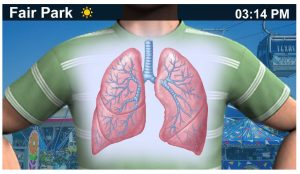 Want to be a neighborhood air pollution watch cop? Use the software to track down hotspots you didn’t even know existed, or enforce the permits issued to local facilities. The network of sensors allows you to track plumes in real time as they cross county and city boundaries.
Want to be a neighborhood air pollution watch cop? Use the software to track down hotspots you didn’t even know existed, or enforce the permits issued to local facilities. The network of sensors allows you to track plumes in real time as they cross county and city boundaries.
This is all administered by an independent group of researchers, colleges, scientists, municipalities, and public health specialists, not the State of Texas or EPA. And it’s all made possible by the same leaps in technology behind smart phones, smart cars, and even smart refrigerators: the ability to cram larger and larger tech capacities into smaller microchips and sell them for less money.
While the aim is to grow a huge network of sensors, the submitted NSF grant proposal calls for establishing two separate smaller pilot project grids of 40 sensors a piece – one grid in Southeast Fort Worth and one in Central Plano.
As the proposal explained, the differences in these two communities represent different ways to use the sensor network.
SE Fort Worth is a predominantly African-American and Latino neighborhood with documented high childhood asthma rates, high absentee rates in its schools, and for much of the year lies downwind from the Midlothian cement plants.
There the network can demonstrate how it can become a household health consulting tool, as well as empower neighborhood groups to address micro and macro-level air quality problems. Downwinders at Risk’s role in SE Fort Worth is yoking the high tech sensor network with traditional community organizing. In effect, we’re creating a new citizens tool for cleaner air and a brand new guide on to how to use it to get results.
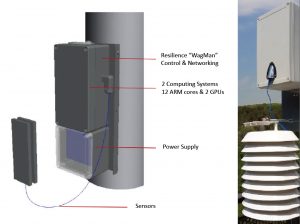 In Plano, city officials want to use the sensor network to help traffic flow and minimize vehicular air pollution. Smart technology is already being installed in the city’s infrastructure, so it’s not a huge leap to imagine installing their 40 sensors on a major roadway for 40 blocks in a row to see how traffic light timing and other variables can be adjusted to minimize internal combustion transportation pollution.
In Plano, city officials want to use the sensor network to help traffic flow and minimize vehicular air pollution. Smart technology is already being installed in the city’s infrastructure, so it’s not a huge leap to imagine installing their 40 sensors on a major roadway for 40 blocks in a row to see how traffic light timing and other variables can be adjusted to minimize internal combustion transportation pollution.
When you begin to realize that the system can not only report conditions, but learn from them and apply that learning to being able to guide not only your own personal health, but the public health policy for millions, you realize how transformational this technology can become. It has the potential to be the most important tool in fighting for cleaner air that we’ve ever seen – because it works from the bottom up and puts the power to change things in the hands of individuals instead of agencies.
We don’t always have to fight the bad guys head on – we can go around them. We can replace them. That’s what makes this network so sublimely subversive. It just leap frogs over an obsolete, regressive status quo.
We should know by the end of next month whether the participants in last week’s call were persuasive enough to convince the NSF to fund the DFW project. Regardless of that decision, the same consortium of colleges, cities and citizens groups is committed to building-out their own 21st-Century air quality monitoring network.
Lege Slashes Air Quality Budget…Making Our Wise County Citizen Science Project More Important
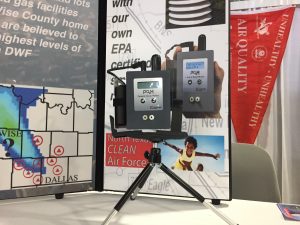 Not to be outdone by the Trump Administration’s attempted deconstruction of the Clean Air Act, the Texas House of Representatives voted in early April to take $20 million from the Air Quality Division of the Texas Commission on Environmental Quality and spend it on an alternatives to abortion program.
Not to be outdone by the Trump Administration’s attempted deconstruction of the Clean Air Act, the Texas House of Representatives voted in early April to take $20 million from the Air Quality Division of the Texas Commission on Environmental Quality and spend it on an alternatives to abortion program.
$20 million may not sound like much in a an office that has a $191 million budget, but a lot of that total is dedicated to programs in place around the state. For example, over $150 million is set aside for vehicle “emission reduction” grants to local governments in smoggy non attainment areas like Houston and DFW to subsidize new engine and repairs. A lot less is truly discretionary and a lot more at risk.
For example, TCEQ only spends a little over $6 million on grants for air monitoring. And it doesn’t get all that much bang for its buck. Only 20 monitors record smog levels over ten counties where seven million people live in DFW. This leaves huge gaps where there should be monitors but aren’t. Like Wise County.
Only Wise County isn’t just an unintentional gap in smog data. It’s a premeditated black hole, left there by design by the same TCEQ whose job it is to set-up air quality monitoring in DFW.
Over at least the last two decades, model after computer model has shown Wise County to have among the highest, if not the highest smog levels of any county in the DFW non-attainment area. Yet every time the state had the opportunity to locate a monitor to confirm those models, it passed. Why?
Because the higher the smog levels officially recorded in DFW, the more industry needs to reduce pollution by adding controls or replacing obsolete equipment.
As it is, a single tiny part per billion difference in our regional smog level was responsible for North Texas getting an exemption to turn in any plan at all for the new, and newly-endangered, 70 ppb federal ozone standard. We’re at 80. If we’d been at 81 ppb we would have had to turn in a plan. Probably a terrible one, but still a plan. A plan we could then use for court fodder to maybe get something. Now even that slim piece of leverage is gone. It’s very possible monitors in Wise County would have given us an average of 81 or greater, forcing DFW to write a plan for the brand new standard. And that’s why the current TCEQ doesn’t want a monitor there. 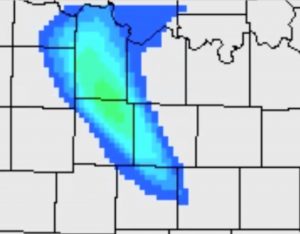
Which is why we’re going there with our own smog monitors.
We just invested $10,000 in two EPA-calibrated ozone sensors that we’re dedicating to the job of measuring Wise County smog. The monitors got their own display at Earth Day and their own photo shoot at D magazine for an upcoming article. Stay tuned for Texas Observer coverage as well. Meanwhile, here’s Culture Map’s piece.
The easiest part is done – we bought the equipment. Now we need your help in building what may the biggest and most important citizen science project in North Texas.
We’ll be launching our effort in June but we need people now who can help us build a stationary, internet-connected monitor for a location in Wise county and others who live in or near there who can help drive and take measurements from a car along a specified grid. This is your chance to actually join others and strike back against the Empire on a 24/7 basis using….SCIENCE!!!
If you’re interested in volunteering to be a Wise County Smog Tracker or want help with the Project in any capacity, please contact us at downwindersatrisk@gmail.org. Thanks.
A Guide to Downwinders & Everything Else @ Earth Day Texas 2017
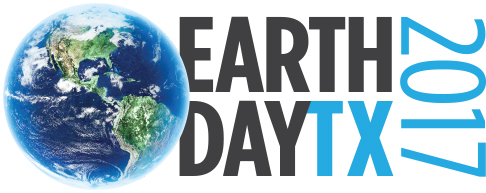 Earth Day Texas 2017 at Fair Park this weekend offers you plenty of chances to catch up with Downwinders and see us in action. It also offers you more information and discussions and multimedia experiences than anyone person could possibly get around to in 72 hours, no matter how committed.
Earth Day Texas 2017 at Fair Park this weekend offers you plenty of chances to catch up with Downwinders and see us in action. It also offers you more information and discussions and multimedia experiences than anyone person could possibly get around to in 72 hours, no matter how committed.
So here’s not only where to find us, but some other interesting things that overlap with our program work, past events, or just seem cool.
Beginning this coming Friday you can come by and see one of our new EPA-calibrated ozone monitors up close and personal at our booth in Centennial Hall – 5010. Downwinders’ Wise County Ozone Project is looking for folks to help us pull-off one of the largest, and most important citizen science projects ever attempted in North Texas. Stop by and see the little piece of equipment that’s not afraid to go where the state fears to tread.
On Friday morning you can catch Downwinders at Risk Director Jim Schermbeck participate with Railroad Commissioner Ryan Sitton and others in a UTA/CLEAR-sponsored roundtable on Fracking in Texas 10:50-11:40 am inside the Automotive Building. Since a community forum on the Bluestone Injection Well on Lake Arlington will have happened in Fort Worth the night before, that topic is sure to still be on the front burner during this discussion. This ro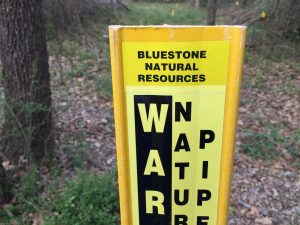 undtable is just one of a long list of events being sponsored as part of first annual Responsible Shale Energy Extraction Symposium happening Friday and Saturday.
undtable is just one of a long list of events being sponsored as part of first annual Responsible Shale Energy Extraction Symposium happening Friday and Saturday.
Also on Friday morning, continuing on into the later afternoon is a running series of discussions and presentations on climate change in the Automotive Building featuring a 90 minute discussion on carbon pricing starting at 12:15 pm, followed by Susan Eisenhower at 1:30 to 2 pm and former General Wesley Clark from 2:30 to 3:30 pm.
From 2:30 to 3:30 pm on Friday at the Grand Place, theres a roundtable on “Youth and the Environment.”
Saturday morning beginning at 10 am the March for Science will snake its way from Downtown Dallas to Fair Park with an ETA of 2 pm, where GreenSource DFW is sponsoring a climate rally at the the Band Shell.
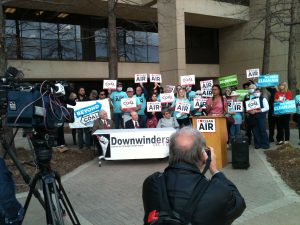 On Saturday, from 4:45 to 5:45 pm Downwinders’ Schermbeck facilitates a discussion about Dallas Air Quality between people with lots of initials after their names, including Dr. Robert Haley, nationally-recognized UT Southwest epidemiologist and coal plant fighter, Dr. David Lary, the guru of high tech air monitoring at UTD, and Dr. Natalie Johnson, a Professor of Environmental and Occupational Health at Texas A&M.
On Saturday, from 4:45 to 5:45 pm Downwinders’ Schermbeck facilitates a discussion about Dallas Air Quality between people with lots of initials after their names, including Dr. Robert Haley, nationally-recognized UT Southwest epidemiologist and coal plant fighter, Dr. David Lary, the guru of high tech air monitoring at UTD, and Dr. Natalie Johnson, a Professor of Environmental and Occupational Health at Texas A&M.
Saturday morning from 10:15 to 11:15 offers you a chance to see RRC Commissioner Sitton’s road show, with a 30 minute spiel on the oil and gas industry up front, and a Q&A session afterwards.
Across the Esplanade in Centennial Hall from 10 to 11 am there’ll be a debate between Log Cabin Republicans and Stonewall Democrats.
From 12 to 12;30 on Saturday pm Tech Tech prof and Climate Change Celeb Dr. Katherine Hayhoe will speak at Centennial Hall.
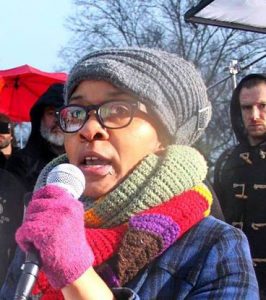 Saturday night at 7:30 pm in the lovely Fair Park Music Hall is a screening of “Bigger Than Water,” the definitive film on the Flint Water Scandal to date featuring Flint Democracy Defense League organizer Nayyirah Shariff, who was Downwinder’s special guest in January for our Root and Branch Revue conference for activists.
Saturday night at 7:30 pm in the lovely Fair Park Music Hall is a screening of “Bigger Than Water,” the definitive film on the Flint Water Scandal to date featuring Flint Democracy Defense League organizer Nayyirah Shariff, who was Downwinder’s special guest in January for our Root and Branch Revue conference for activists.
Sunday morning beginning at 11 am sees what’s bound to be a popular presentation on Tiny Houses in the Grand Place, while a workshop on Protecting Praries takes place at the same time in the Tower Building.
From 3:30 to 4:30 pm on Sunday there’s a roundtable on “Trinity Tribulations” in the Automotive Building and the EDTx Earth Pitch competition wraps up with the Academic and Non-profit divisions from 12:30 to 3 pm.
Exhausted? That’s not even skimming the surface. Whatever you decide to prioritize, allow yourself some time to just wander around.



